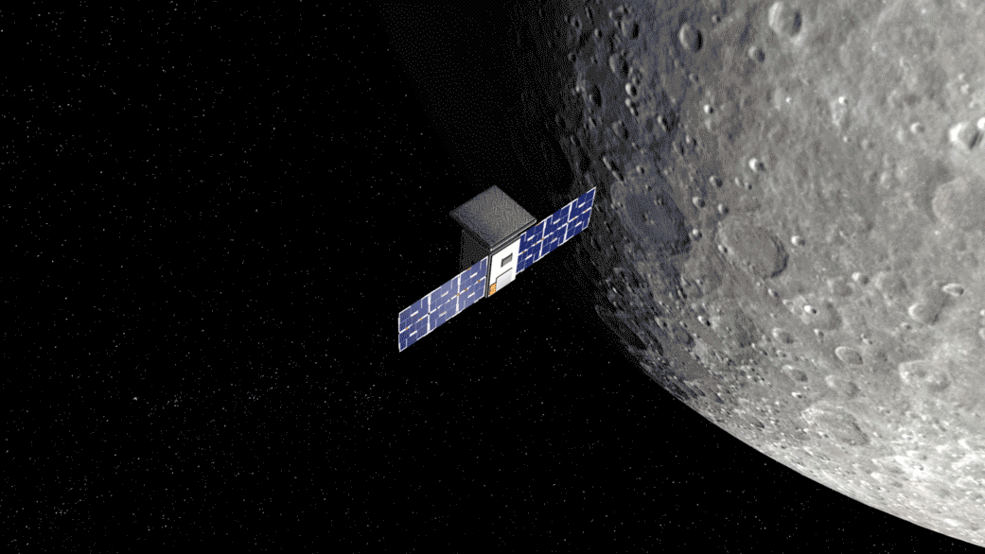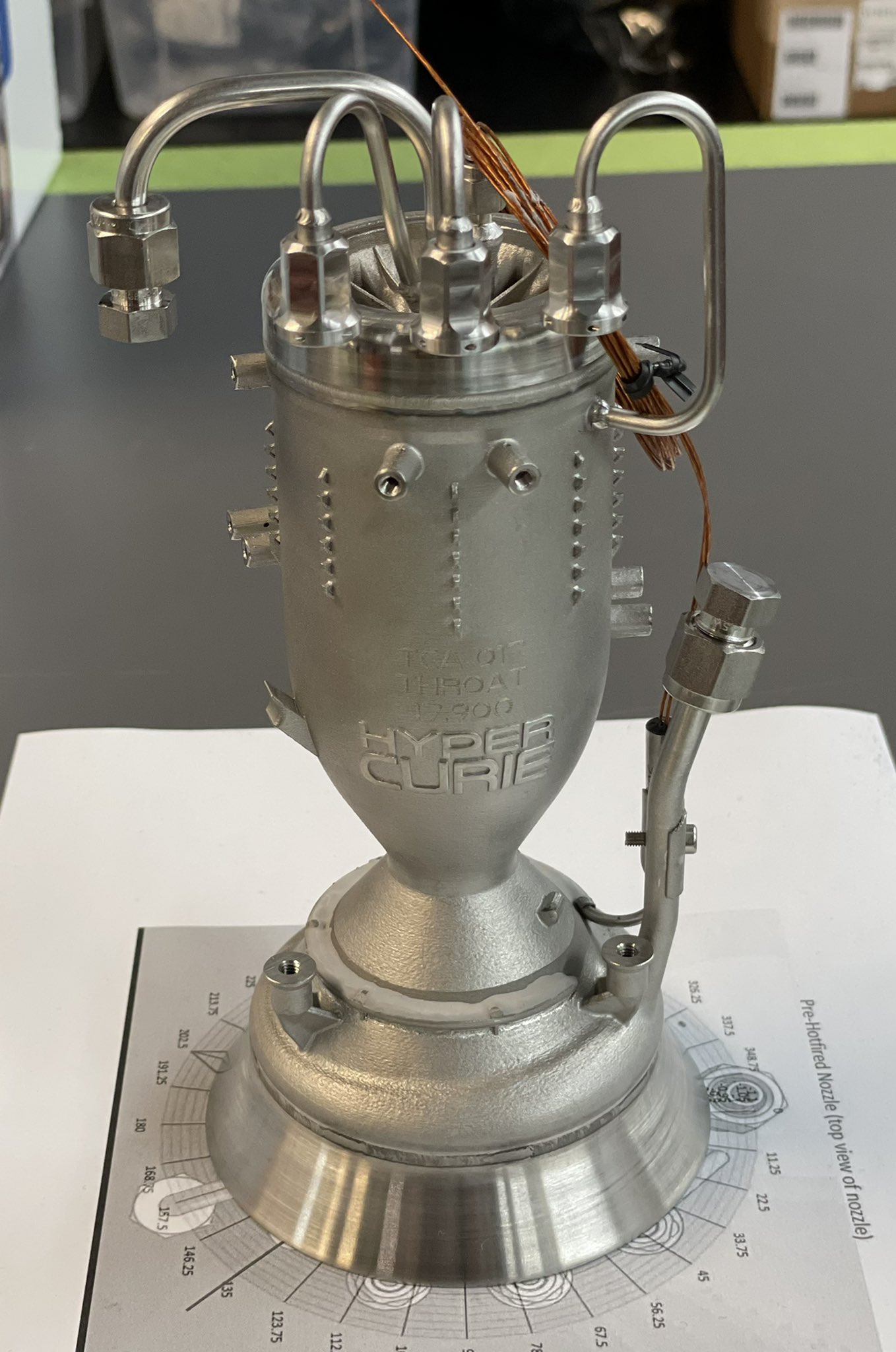A flawless launch by Rocket Lab’s (NASDAQ: RKLB) Electron spacecraft on June 28, 2022, was just the beginning of NASA’s highly awaited Cislunar Autonomous Positioning System Technology Operations and Navigation Experiment (CAPSTONE) mission. The microwave oven-sized satellite heading to the Moon will test a unique lunar orbit for NASA’s Gateway space station, which could be in place after 2024.
 Capstone mission launched aboard Rocket Lab’s Photon satellite bus toward the Moon. Illustration courtesy of NASA/Daniel Rutter.
Capstone mission launched aboard Rocket Lab’s Photon satellite bus toward the Moon. Illustration courtesy of NASA/Daniel Rutter.Shortly after liftoff on Electron, Rocket Lab’s lunar Photon spacecraft bus, with Capstone attached, separated from the rocket. Over the next five days, Photon’s 3D printed HyperCurie engine will perform a series of orbit-raising maneuvers, stretching its orbit into a prominent ellipse around Earth. Then on day six, HyperCurie will ignite one final time, accelerating Photon Lunar to 24,500 mph (39,500 km/h) and setting it on a ballistic lunar transfer – a type of low-energy transfer in which a spacecraft launches hundreds of thousands of miles away from Earth. Within 20 minutes of this final burn, Photon will release Capstone into space for the first leg of the micro satellite’s solo flight.
From this point, Capstone’s journey to the Near Rectilinear Halo Orbit (NRHO) around the Moon will take roughly four months, said NASA. Capstone will then use its own propulsion and the Sun’s gravity to navigate the rest of the way to the Moon, reaching a distance of 963,000 miles from Earth – more than three times the distance between Earth and the Moon – before being pulled back towards the Earth-Moon system.
 Capstone being integrated onto Photon in preparation for lift-off. Image courtesy of Rocket Lab via LinkedIn.
Capstone being integrated onto Photon in preparation for lift-off. Image courtesy of Rocket Lab via LinkedIn.“Today’s launch was an important step in humanity’s return to the Moon and a testament to the determination, resolve, and innovation of the hundreds of people behind Capstone,” commented Rocket Lab founder and CEO, Peter Beck. “Rocket Lab was founded to open access to space and enable ground-breaking missions like this that push the limits of what’s possible with small satellites. While Capstone’s journey to the Moon has only just begun, we’re proud to have safely delivered Capstone to space.”
 Capstone launch aboard Rocket Lab Electron rocket. Image courtesy of Rocket Lab.
Capstone launch aboard Rocket Lab Electron rocket. Image courtesy of Rocket Lab.A pioneering space startup, Rocket Lab is among a handful of companies that have collaborated to open up orbital access. By offering launch on-demand, schedule control, and tailored orbits, Rocket Lab has managed to streamline the path to orbit and emerged as one of the leading competitors in the space. Through its privatized rockets, it has already launched 26 vehicles and deployed more than 140 satellites for customers across commercial, civil, defense, and academic sectors. And since responsive access to space is about more than just rockets, Beck realized from the get-go that Rocket Lab needed launch pads to operate independently, so it got working on building its three launch pads, located in Mahia, New Zealand, and Wallops Island, Virginia.
In the 3D printing industry, Rocket Lab is one of the most successful cases of space companies that have turned to 3D printing technology to speed up processes, reduce costs and lighten the load. Known for its almost entirely 3D printed Rutherford engine, which features prop valves, injectors, pumps, and engine chambers that are all 3D printed with electron beam melting technology, Rocket Lab has become entirely engaged in 3D printing.
For this mission, the next-generation launcher manufacturer uses its HyperCurie engine for the first time in the Photon spacecraft, with the Capstone satellite mounted on top. An evolution of its Curie engine, HyperCurie is a 3D printed bipropellant, pump-fed engine with a 120N thrust used optionally as the company’s third stage for the Electron rocket.
 The 3D printed HyperCurie engine powering Rocket Lab’s Photon spacecraft for NASA’s CAPSTONE mission to the moon. Image courtesy of Peter Beck via Twitter.
The 3D printed HyperCurie engine powering Rocket Lab’s Photon spacecraft for NASA’s CAPSTONE mission to the moon. Image courtesy of Peter Beck via Twitter.With its Photon vehicle, Rocket Lab is setting new benchmarks for low-cost access to space for small payloads. Rocket Lab’s communications director, Morgan Bailey, said the launch cost NASA less than $10 million, which is a fraction of the average cost of a lunar launch. For comparison purposes, Bailey cited the launch of the 2018 NASA space telescope TESS into lunar orbit, costing $87 million to launch aboard SpaceX’s Falcon 9 rocket.
Launching from Rocket Lab’s Launch Complex 1 on the Mahia Peninsula of New Zealand, Capstone is described by the agency as a “pathfinder” that will demonstrate several technology capabilities during its mission timeframe while navigating a never-before-flown orbit around the Moon. During its mission, it will provide data about operating in the lunar orbit and even carries a new precision one-way ranging capability built into its radio that could reduce the ground network time needed for in-space operations.
To celebrate this milestone, NASA invites the public to follow the spacecraft’s journey live using NASA’s Eyes on the Solar System interactive real-time 3D data visualization. Beginning around July 5, 2022, viewers can “virtually ride along with the CubeSat” thanks to a simulated view of our solar system.
Subscribe to Our Email Newsletter
Stay up-to-date on all the latest news from the 3D printing industry and receive information and offers from third party vendors.
You May Also Like
Precision at the Microscale: UK Researchers Advance Medical Devices with BMF’s 3D Printing Tech
University of Nottingham researchers are using Boston Micro Fabrication‘s (BMF) 3D printing technology to develop medical devices that improve compatibility with human tissue. Funded by a UK grant, this project...
3D Printing Webinar and Event Roundup: April 21, 2024
It’s another busy week of webinars and events, starting with Hannover Messe in Germany and continuing with Metalcasting Congress, Chinaplas, TechBlick’s Innovation Festival, and more. Stratasys continues its advanced training...
3D Printing Webinar and Event Roundup: March 17, 2024
It’s another busy week of webinars and events, including SALMED 2024 and AM Forum in Berlin. Stratasys continues its in-person training and is offering two webinars, ASTM is holding a...
3D Printed Micro Antenna is 15% Smaller and 6X Lighter
Horizon Microtechnologies has achieved success in creating a high-frequency D-Band horn antenna through micro 3D printing. However, this achievement did not rely solely on 3D printing; it involved a combination...





























